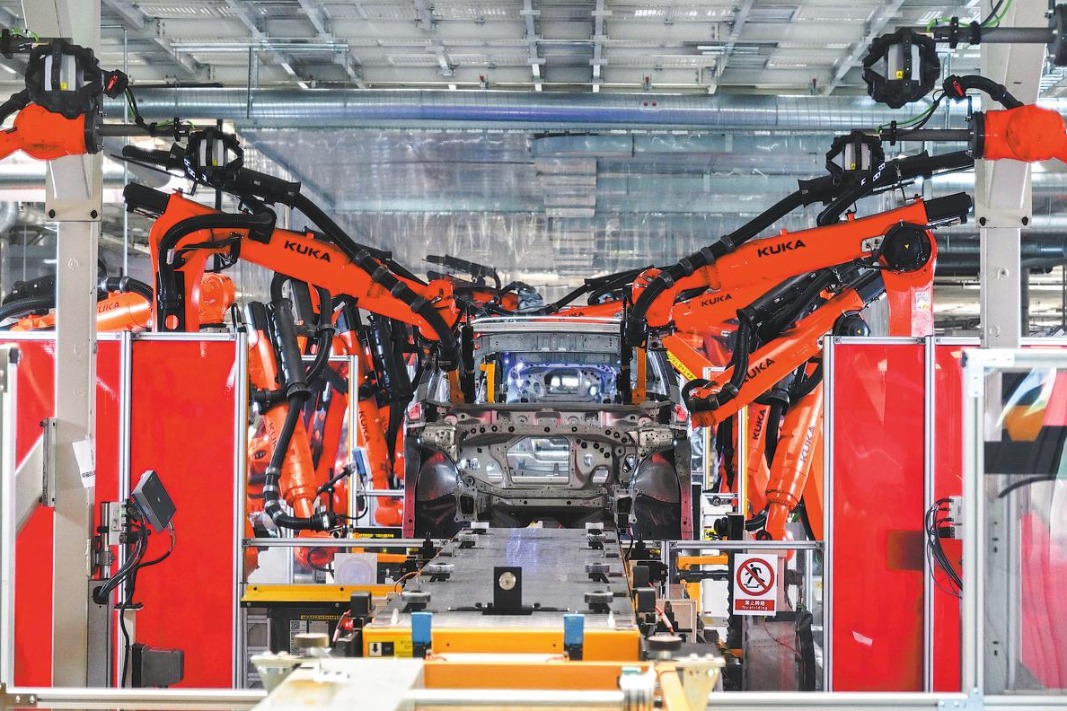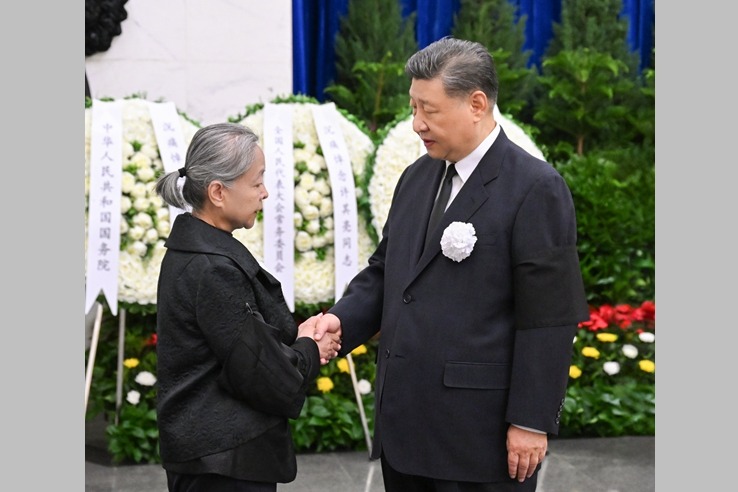10 years on, Beijing-Shanghai line on fast track to high-speed glory
By WANG YING in Shanghai | China Daily | Updated: 2021-06-29 09:13

The COVID-19 epidemic hurt China's high-speed railway sector last year, but the Beijing-Shanghai section, which will turn 10 on Wednesday, remained profitable, spurring the introduction of a new model of Fuxing bullet train on the prime stretch, offering better services and safety, said senior executives of the company that operates the line.
Beijing-Shanghai High Speed Railway Co Ltd, the operator, listed in Shanghai in January 2020, just before the epidemic broke out. Thanks to a series of efforts, the Beijing-Shanghai high-speed railway managed to raise the quality of its services and adjust the operational capacity in spite of the impact of the epidemic on passenger numbers.
That helped the company to ride out difficult times. "With the support of the China State Railway Group Co Ltd, the company effectively adjusted its transportation capacity, and bucked the downtrend by realizing 25.24 billion yuan ($3.9 billion) in sales revenue, which yielded a fairly good profit last year, achieving an overall better-than-expected performance," said Wen Weiming, chief accountant of Beijing-Shanghai High Speed Railway.
The 1,318-kilometer railway opened to public on June 30, 2011.The company operates the nation's busiest and most populated high-speed line that links the Beijing-Tianjin-Hebei region and the Yangtze River Delta region, both of which are densely populated and economically vibrant.
The company continued to lower operational costs, optimize passenger service experience and enhance transportation efficiency this year.
In the first quarter, revenue rose nearly 12 percent year-on-year to 5.74 billion yuan, reflecting strong resilience and effective risk control, said Wen.
A new model of China's Fuxing high-speed train, known as the CR400AF-BZ, can carry 1,285 passengers and shortens the ride duration to 4 hours and 37 minutes.
The bullet train integrates internet, cloud computing, big data, 5G and other new technologies to offer convenience and online access to passengers.
Among the conveniences offered on board are intelligent lighting in toilets, smart vending machines in dining cars, and stabler mobile telephony and internet access.
In the past decade, the Beijing-Shanghai high-speed railway line has continuously improved its services by raising train speeds, using a flexible ticket pricing strategy and diversifying in-train offerings, said Shao Changhong, the company's general manager.
"Along with rising frequency and number of trains, there has been a steady rise in passenger numbers," said Shao.
Profitability meant that the company could invest big in the research, development and application of advanced technologies and facilities, which helped optimize capacity and raise the level of service, thus meeting the requirements of diverse passengers, Shao said.
The company's successful listing is a milestone for the securitization of high-speed railway assets, said Wan Fang, a director on the company's board appointed by Ping An Asset Management Co, the second-largest shareholder of Beijing-Shanghai High Speed Railway.
Wan said high-speed railway development over the past decade is a testament to both the effective leadership of the Communist Party of China and the strengths of Chinese political system. They provide the nation with superb coordination capability and strong project execution power, which made the project costing more than 200 billion yuan possible.
"The Beijing-Shanghai high-speed railway showed that with a good business model, other high-speed railway projects can be developed as well, to drive a region's development. China's high-speed railway sector has a bright future, thanks to the Beijing-Shanghai line's success," said Wan.
Back in 2008, in a bid to support the central government's decision to build the mega project, an insurance fund consortium led by Ping An Asset Management Co was launched.
Over the past decade, 1.35 billion passenger trips have been made safely on the railway, according to a Xinhua News Agency report that cited China State Railway Group Co Ltd.
The railway turned profitable in 2014 and ever since has stayed so. The company's net profit surged at an annual average of 39.4 percent between 2014 and 2019.
























